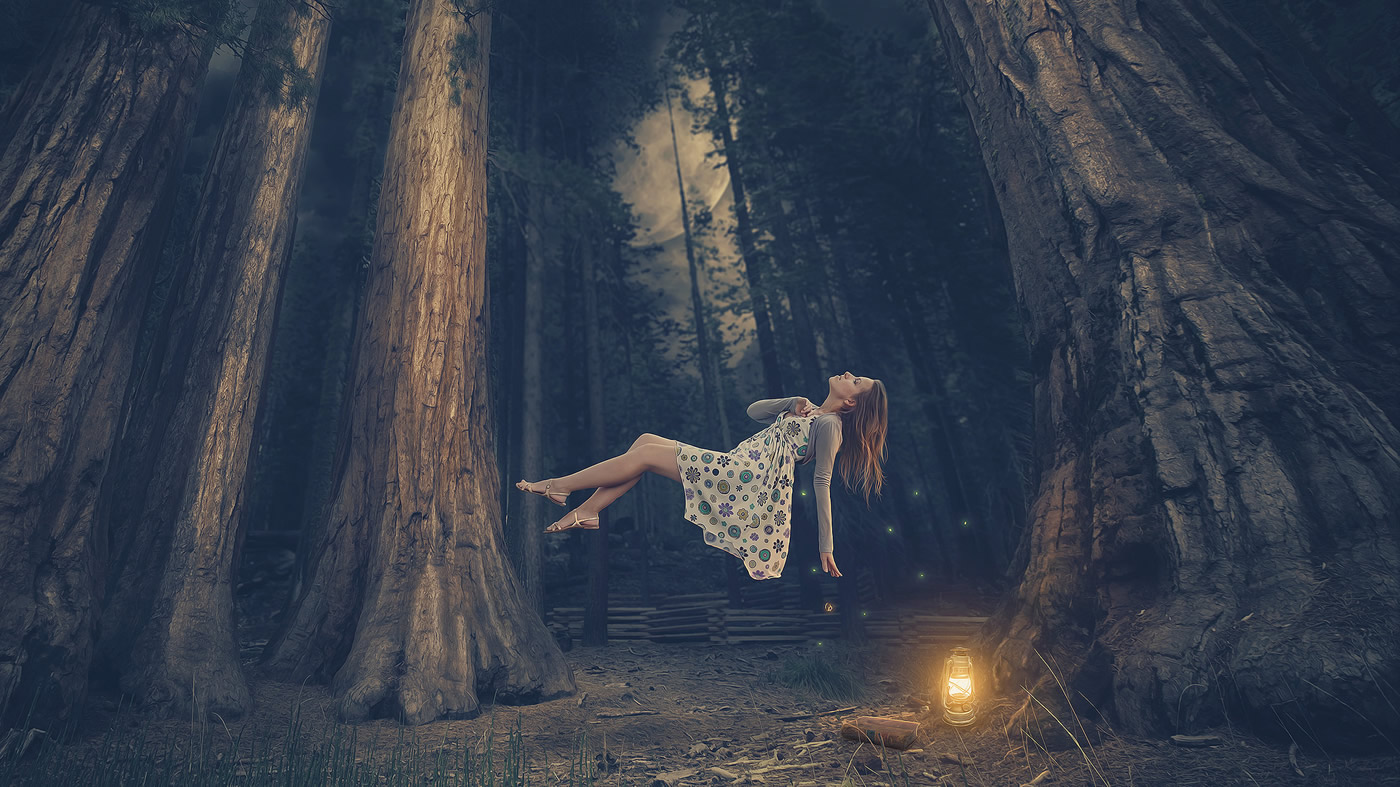Help them define their dream
So far, we’ve been talking about how to get your students to come back to your classes, and how to establish a daily yoga practice, because this is what will really help them.
It’s important though to think a lot about what will really help your students—what will help them achieve the dreams that they have for their own lives. Somehow, coming to yoga is connected to those dreams: maybe they want to look better, so they can find a partner; perhaps they need more energy at the workplace; maybe they have a bad back or some other physical problem.
As a teacher, your only goal really is to help your students achieve their dreams.
To do this, you’re going to have to take the time to get to know each of your regular students personally, and find out what dreams they have. You’ll discover that, oftentimes, people aren’t really sure what their dreams are: they feel that they have a dream, but they might need some help defining exactly what it is.
Most of us, without really thinking about it, tend to concentrate on our own needs and just not pay that much attention to others’. As a teacher, we have to try to turn this around. We need to become dreamfillers, and to do that we need to understand just how to make a dream come true.
That takes knowing what makes the world itself tick. And that starts with understanding mental seeds.
Video
Audio
Teach them about seeds
If you’ve heard any of my teachings before, you’ve no doubt heard about the Pen Thing. But it never hurts to go through it one more time—that helps us understand about mental seeds, and that helps us help our students achieve their dreams.
I hold up a pen in my hand, and ask you what it is. “It’s a pen.”
“Okay; so if a little puppy comes in here right now and I wave this thing in front of them, do they see a pen too?”
“No.”
“What do they see?”
“They see a chew toy: something to chew on.”
“So who’s right, the human or the dog?”
A bit of a pause. “Well, I guess they’re both right. To the human, it really is a pen; to the dog, it really is a chew toy.”
“So suppose now that I set this pen on the table here, and both the human and the dog leave the room. There’s nobody in the room. At that time, which one is it: a pen, or a chew toy?”
“Well I guess that at that time—once everyone has left the room—it’s not really a pen or a chew toy. Right then it’s neither one…it’s sort of, nothing at all.”
“Exactly. And that’s what the yogic tradition calls shunya, or emptiness. It just means “blank,” like a blank white movie screen. At that moment, this cylinder-shaped thing is just available, available to be either a pen or a chew toy, depending on who walks in the room.
Another bit of a pause, while the other person digests this.
“So now, if I do walk in the room and I do see a pen, is that pen coming from me, or is it coming from itself?”
“Well, I guess that if it were coming from its own side, then the dog would see a pen too. So the pen must be coming from me, from my side. And if the dog sees a chew toy, that must be coming from their side.”
“Does that mean that I can just close my eyes and wish this cylinder to be something else? If it’s coming from my mind, can I just wish this thing into being a bar of gold?”
Shakes of heads all around. That’s not the way stuff works. Everybody who ever wanted anything wished they had it, but that didn’t make the thing suddenly appear.
So what makes me see a pen? It’s not under my current control. I have a seed in my mind that opens up when I look at this cylinder, and creates a tiny picture of a pen. That little picture gets between me and the cylinder, and makes me see it as a pen. I am at the mercy of whatever seeds are going off in my mind.
If we want to take control of our life—and if we want to help our students reach their own dreams—then we need to understand these seeds: how to plant them, how to make them grow fast into the world around us. For this, we need to know about the Four Steps.
Teach them the Four Steps to A Dream
There are four simple steps to planting seeds successfully: to achieving our own dreams, and to helping our students achieve theirs. Here is a brief summary of those four.
1) Start with a single sentence
If you want to know what seeds to plant in your garden, you need to know what you want to grow in the first place. If you want watermelons, you need to plant watermelon seeds. So first we have to be very clear on what our dream is.
When planting mental seeds, it’s important to decide just our number one dream, and not get too spread out. Plant the watermelons, and then after that plant the corn. Don’t try to do both at the same time.
When dealing with dreams, try to get your students to express what they want in a single, simple sentence. For example, I want to find a partner; or I want to lose ten pounds; or I want to save the world.
2) Plan who to help
Seeds can only be planted with someone else; just as we can only plant seeds in our garden if we have soil in which to place them. The way to plant a seed for our own dream is to help someone else achieve the same or a similar dream themselves. If I want to find a partner—if I want companionship—then I’m going to have to plant that seed by providing companionship to someone else; say, by visiting a lonely, elderly woman in a nursing home.
Visiting this person plants the seeds, but planning who to visit, when to visit them, and what to do when I visit them plants a lot more seeds even than the visit itself, because I’m thinking about them all the time, and thinking is the most powerful way to plant seeds. Spend a lot of time thinking about who you’re going to help to get the thing that you dream of getting—that’s Step Two.
3) Go to Starbucks, and see the ripples
Suppose our dream is to lose ten pounds. We’ll plant a seed for this by helping someone else lose some weight. Don’t sit and worry about which diet to follow, or what exercise program to try. Just plant the seeds, and then the best thing to do will come on its own.
Step Two is to pick the person we’re going to help, and to think up ways to help them. Step Three is to actually take them out somewhere—say, to Starbucks—and to sit with them and talk about ways that you can think of that will help them lose weight. Or else to actually go to the nursing home to help the elderly lady.
Now there’s an important point here. Visiting an elderly person just so I can get a partner out of it is a pretty selfish thing to do! We need to change the dynamic here so that we don’t just end up creating two seeds: one for a partner and one for a partner who is a selfish son-of-a-gun. How do we make the seed at Step Three something that helps the whole world?
This gets into what the Buddhist tradition calls “bodhichitta,” which literally translates as “Buddha Mind.” It’s a vision of a world that is perfect, and a feeling of how we could help make it that way.
There’s a very simple trick we can use during Step Three to make sure it’s laced with Buddha Mind. Think to yourself: “Okay. I’m trying something new. Instead of finding a partner I’m going to plant one. If this new system works, then I’ll have the partner I always hoped for.
“My friends know I’ve been trying for years, and they’re going to be really curious what I did this time to meet such a nice person. I’ll tell them about the seeds and about the nursing home thing, and then some of them will try it themselves.
“Those who do will create their own fantastic partner, and then their friends will ask them what they did. In time, there might be a chain of like a thousand people that starts with me…and a thousand elderly women with people in line outside to visit them!
“I might even…change the world! Help make it a perfect place!”
That’s bodhichitta, the real thing, in action. And it changes a selfish Step Three into an ultimately compassionate one.
4) Lay down on your bed & stare at the ceiling
It’s not unusual for me to give a talk somewhere to a bunch of people, and have someone raise their hand and say, “I’ve been visiting elderly ladies for years, and no man ever showed up in my life,” or “My mother is the most generous person I’ve ever seen, but she’s broke all the time!”
These are good seeds, for sure. Think though of a watermelon seed that is perfectly good—but we throw it on the sidewalk instead of planting it in the ground. Or it does get into the ground, but doesn’t get water, or sunlight, or nourishment. The seed might even open, but it will be stillborn—just a tiny sprout that doesn’t go anywhere, doesn’t produce fruit.
The Four Steps are like the water & sunlight and the rest. These are “mental seed farming technique,” and if we use all four then our seeds will grow strong and fast. And Step Four is the most important of all.
We are trained to think of meditation as something that we do on the floor with crossed legs and a straight back. But let’s face it—some of the best meditation you ever did in your life was in high school, leaning back on your bed, staring off towards the ceiling, completely engrossed in a daydream about your girlfriend or boyfriend. In Step Four, we want to try to reach that same completely-engrossed daydream.
So when you come home after visiting the elderly woman, then fix dinner, eat it, clean up, take your bath, (watch a little TV or do a few emails if that’s what you need to do), and then get into your nightclothes. Sit down on your bed halfway lying down, propped up on your shoulder, and stare off at the ceiling, eyes unfocussed, just the way you did in high school.
Take a little review of your Partner Creation Project. Go over all the details of how you made your plan to find a lonely person (Step Two), then go over all the details of your meeting with them (Step Three). It’s very important to review carefully how, during Step Three, you gave some thought to the chain reaction you’re going to set in motion if you do find your partner with this new system, and all your friends start visiting nursing homes too: bodhichitta.
Remember that seeds are planted inside the mind. We plant seeds by what we say, and by what we do, but only because we are mentally aware of ourselves while we talk or act. It takes thought to get seeds into the mind.
During Step Four, we are taking advantage of the fact that—when we think—we are planting seeds directly into the core of the mind. We plant a lot of seeds at Starbucks, sitting with our elderly friend—but we plant a lot more seeds during Step Two and Step Four, just thinking about this person, and how we’re going to help them.
This is the whole difference between planting random seeds by helping people here and there; and getting a real partner to pop out of a seed that we’ve watered and fertilized with all four steps. If you learn the Four Steps well, then you can be a real help to your yoga students—helping them achieve their dreams, not just get into a headstand.
To learn more detail on The Four Steps, please see the following on The Knowledge Base website:
Nothing Works: Four Steps for Making Powerful Karma (2010, Detroit, Geshe Michael Roach)
The Four Steps to Make a Karmic Seed More Powerful (2012, Moscow, Geshe Michael Roach)
To go into much more depth and learn everything you ever wanted to know about karma, or “seeds”, please see the following course on The Knowledge Base website:
ACI Course 05: How Karma Works (1994, New York, Geshe Michael Roach)
Teach them how to remove old seeds
Just a side note on Mental Seed Planting Technique: There are certain cases where some old bad seeds which are already inside of our subconscious can block the new seeds from coming out properly. Think of seeds like airplanes waiting in line on the runway; generally speaking, seeds planted earlier ripen first, and are followed by those planted later.
Planting seeds very consciously, with the Four Steps, can bring later seeds to the front of the queue, so they take off before the older ones—like moving the President’s plane, Air Force One, up past all the passenger liners. We can also though “cancel” some of the earlier flights, by removing old negative seeds from our consciousness.
We do this through what are known in Tibetan as the “four powers” (tob-shi in Tibetan):
1) The Power of the Foundation
Simply sit for a few minutes and review everything that you know about seeds: the Pen Thing, and the Four Steps. Remind yourself that everything and everyone in your life is coming from seeds that you’ve planted by taking care of others. And this means that you have the power to change any seed inside of you.
2) The Power of Intelligent Regret
If we’ve been trying to create a partner with our visits to the elderly and we’re not getting much progress, this means that we must have created some negative seeds earlier which are blocking our new seeds. Perhaps it’s an action that we remember: an elderly person, or a lonely co-worker at our office, was trying to get our attention, trying to ask us to spend some time talking with them over coffee, but we ignored them.
Or perhaps we don’t remember doing anything specific to ignore lonely people, which is certainly possible since the seed to be lonely ourselves can be very tiny, and in time grow to a huge problem—just as a small tree seed develops into a huge tree.
In either case, we need to think a bit about why we’re seeing the loneliness go on in our life—we need to admit to ourselves that we created this loneliness, by ignoring those who are lonely. This admission is not guilt or beating ourselves up: the Tibetans don’t even have a word for “guilt” like that. It’s just the calm, reasoned conviction that we’ve made a mistake in the past, and can easily fix it by taking action now.
3) The Power of Commitment
The third power is the most important—it’s the one which takes away most of the old negative seed. It’s simply to make a reasonable commitment to ourselves that we will not repeat our previous mistake, for such-and-such a time. For example: “For the next week, I will not ignore a single lonely person in my office at work—I will make some effort to smile or reach out to each of them, at least once a day.”
It’s important to put this into a time frame during which we can really focus and not forget our little commitment.
4) The Power of the Antidote
A lot of us went to elementary schools where—if we did something bad—the teacher would give us a “make-up” assignment, like writing 300 times on the chalk board, “I will not pass notes during class.” The fourth power is something like this. It is more of a positive commitment, on top of the “negative” commitment in the third power, where we promise not to repeat the negative thing we did that planted our “blocker” seed in the first place. For example, we might commit to teach three yoga classes at a senior center in the town that we live, to create some healthy companionship for people.
The Four Powers were taught by the Buddha himself, in a sutra by the same name, more than 2,000 years ago. And they work! Just try them.
If you want to view the original sutra, we actually have a translation available here on The Knowledge Base website, just click the following link:
An Exalted Sutra on The Greater Way entitled “The Teaching on the Four Practices”
To go into much more depth on The Four Powers introduced here, please see the following course on The Knowledge Base website:


















